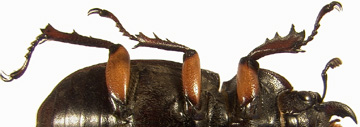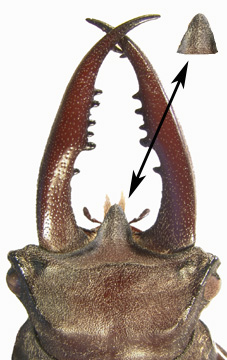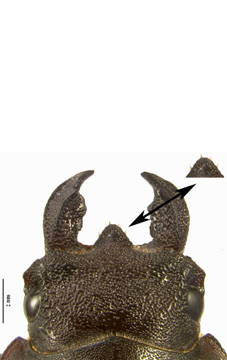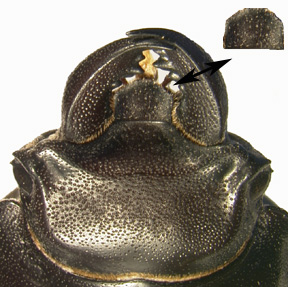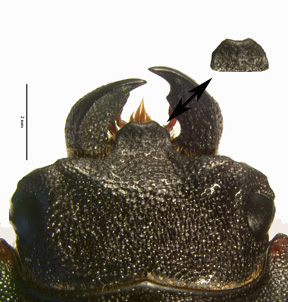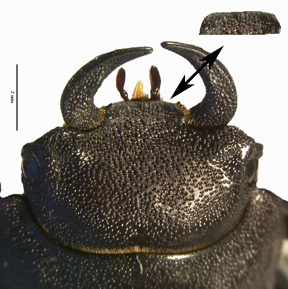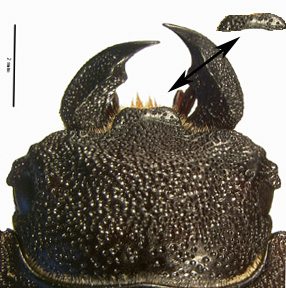1.
.
.
|
Legs with femora bicolored, light brown with darker brown apex
(Fig. 1).
. |
|
| |
|
|
|
1'.
. |
Legs with femora unicolorous, dark brown to black. |
|
| |
|
|
|
|
Fig.
1. Right ventral view of L. capreolus, female
showing
light brown femora with darker apices.
|
|
|
| |
| |
| |
| |
| |
| |
| |
| |
| |
| |
| |
| |
| |
| |
| |
| |
| |
| |
| |
| |
| |
| |
| |
|
| 2(1).
|
Labrum subtriangular with narrowly rounded apex in both sexes (Figs. 2-3). Male mandibles multidentate, always longer than head and prothorax combined. |
|
| |
| 2'. |
Labrum pentagonal or subrectangular, apex truncate in both sexes (Figs. 4-7). Male mandibles never longer than head and prothorax combined, multidentate or not. |
|
| |
|
|
|
............... |
|
| Fig.
2. Head of male L. elaphus (dorsal view) with arrow showing labrum (labrum inset to show shape). |
|
Fig.
3. Head of female L. elaphus (dorsal view) with arrow showing labrum (labrum inset to show shape). |
|
|
| |
| |
| |
| |
| |
| |
| |
| |
| |
| |
| |
| |
| |
| |
| |
| |
| |
| |
| |
| |
| |
| |
|
3(2).
|
Male mandibles usually multidentate. Labrum subquadrate in both sexes, length nearly subequal to width (Figs. 4-5). Central and eastern North America. |
|
| |
| 3'.
|
Male mandible with 0-1 internal teeth. Labrum narrow, length less than 1/2 width (Figs. 6-7). Western North America (AZ, CO, NM, UT, and neighboring parts of México). |
|
| |
Fig.
4. Head of male L. placidus (dorsal view) with arrow showing labrum (labrum inset to show shape). |
|
|
Fig.
5. Head of female L. placidus(dorsal view) with arrow showing labrum (labrum inset to show shape). |
|
| |
|
|
| |
Fig.
6. Head of male L. mazama (dorsal view) with arrow showing labrum (labrum inset to show shape). |
|
|
Fig.
7. Head of female L. mazama (dorsal view) with arrow showing labrum (labrum inset to show shape). |
|
| |
|
|
|
| |
| |
| |
| |
